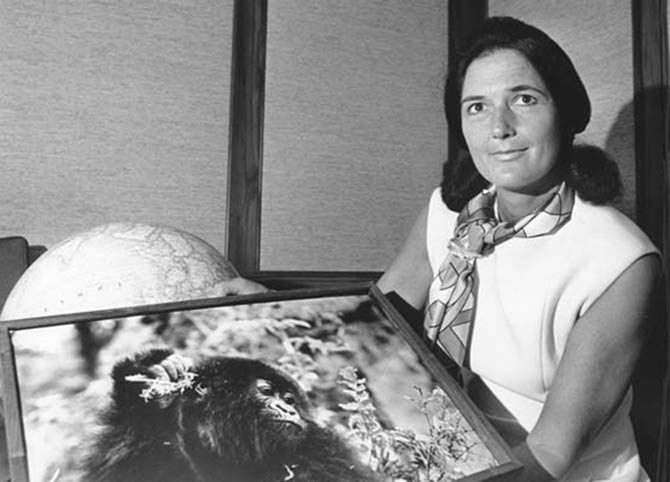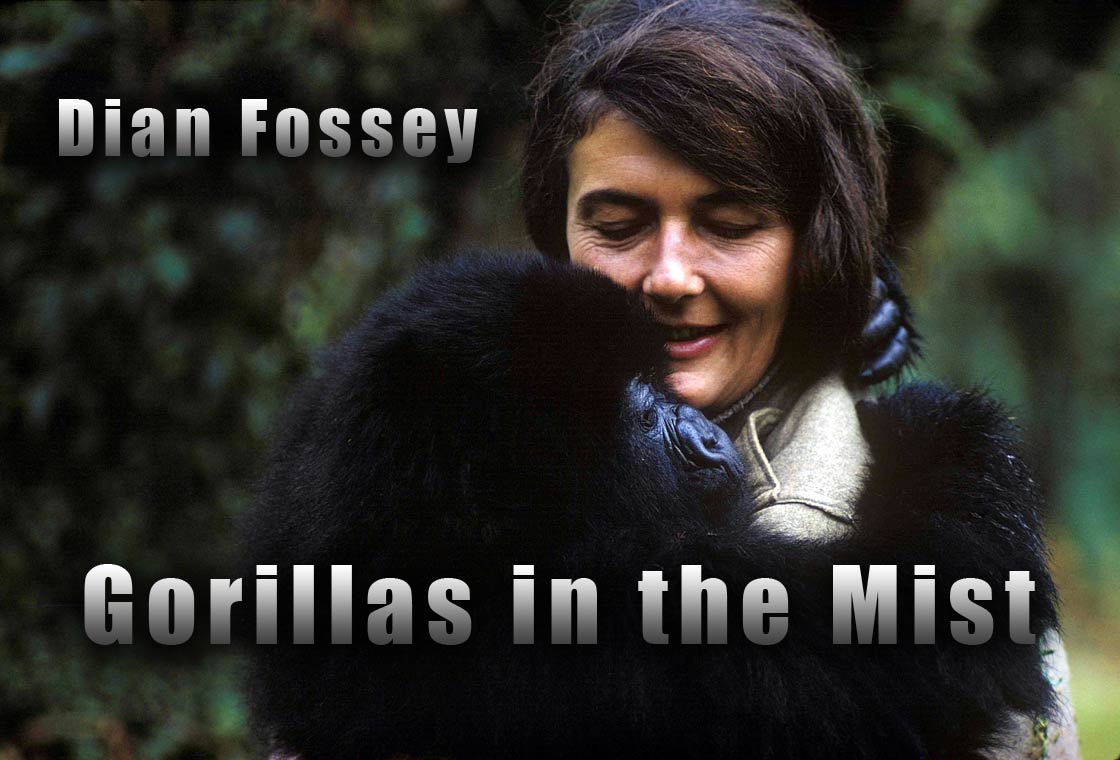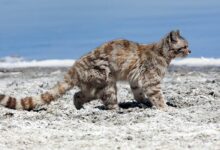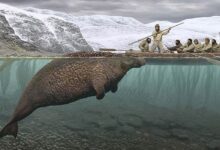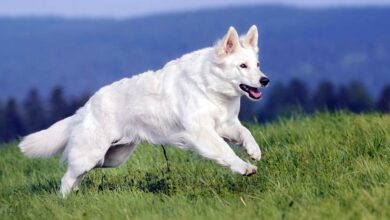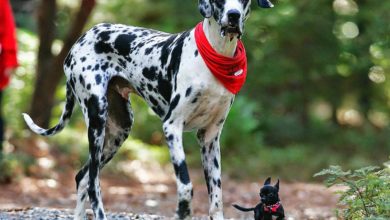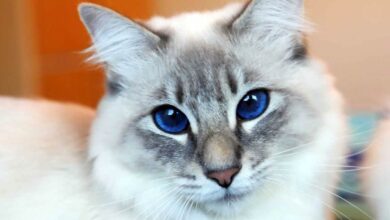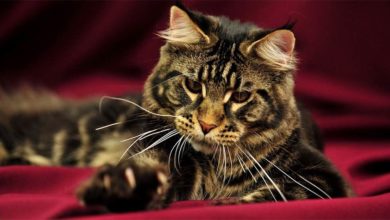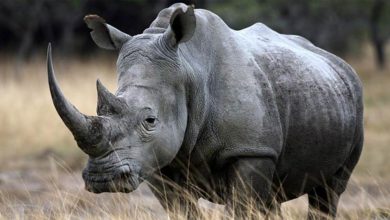Dian Fossey and her story
Gorillas in the Mist
“Her greatest misfortune was that she was not born a gorilla” was the opinion expressed about Dian Fossey, the researcher thanks to whom the world became interested in mountain gorillas. It was because of her that the world stopped seeing gorillas from chilling tales in gorillas, and saw gentle and protective creatures. We present the story of Dian Fossey, a woman who loved gorillas more than people and contributed to changing their perception by saving them from poachers.
Nyiramachabelli, or “the lonely woman in the woods”, was the name used by those Rwandans who respected her. Not all of them, however – the ruthless struggle with poachers made many of them call her a witch. She felt and trusting towards gorillas, dry and unpleasant towards people, even her close associates – during Dian Fossey’s lifetime she aroused a lot of controversy. There is no doubt that without her research our knowledge of gorillas would be only marginal.
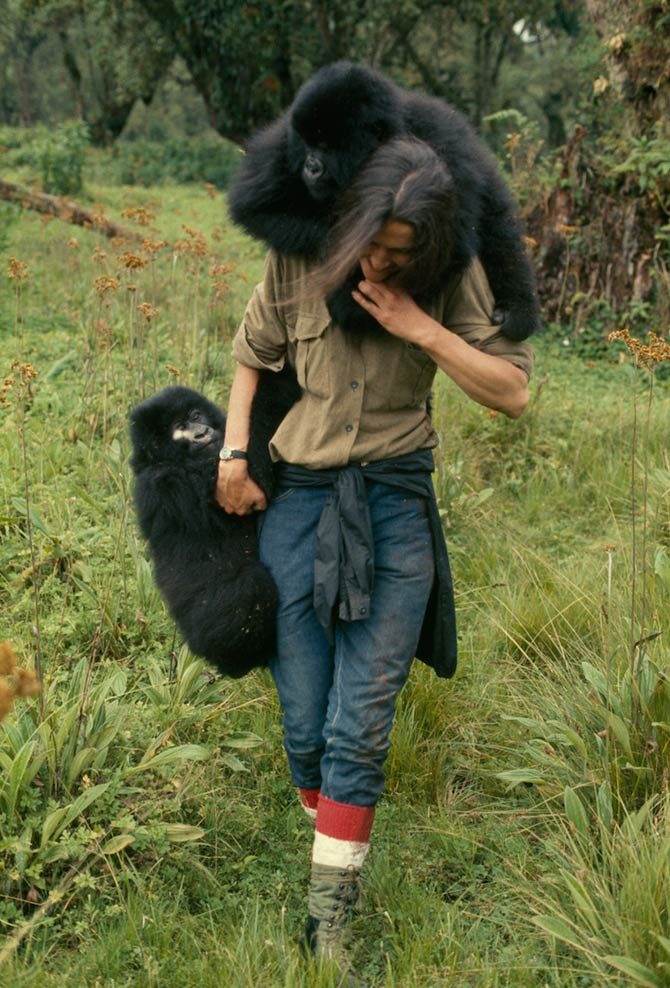
The beginnings
Dian Fossey was born on January 16, 1932 in San Francisco. Her parents divorced when she was 6 years old; like many children from broken families, she loved animals. This probably had a significant impact on her later life attitude. She was educated as an occupational therapist in San Jose. She worked with underdeveloped children until 1963, when she managed to raise money for a trip to Africa.
In Africa, she met the paleoanthropologist Louis Leakey, who was researching the evolution of anthropoid. It was he who proved that man comes from Africa. Leakey had an unusual attitude for his time – he believed that women were better suited to field work because of their persistence and resistance to discomfort. The firm and energetic Fossey made a favorable impression on him, so he decided to be a Fossey promoter in mountain gorilla research. The same scientist also led Jane Goodal’s research on chimpanzees. It was high time for it – it was believed that mountain gorillas would probably become extinct in just 5 years.
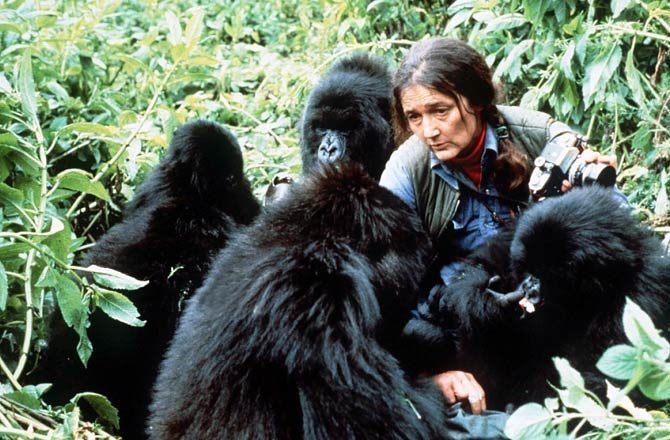
First steps in Africa
In this way, Dian Fossey ended up in Congo, which at that time was considered one of the most dangerous countries in the world due to constant civil wars. She set up a camp at the foot of the Virunga Mountains. From the outset, she had to face many difficulties in tracking animals. She quickly noticed that the gorillas were afraid of her and that she had to make them accustomed to her presence. To speed up this process, she started imitating their behavior, way of moving and noises. Thanks to this, after a month she was able to get close to them from a distance of several meters.
In 1967, another military revolt broke out. To avoid the threat, Fossey was forced to leave the country. However, she did not give up: She managed to persuade Leakey to change the research area and thus ended up in Rwanda – there, among the volcanic mountains, in the Volcanoes National Park, on September 24 she built a camp called Karisoke.
On the same day, she met the bane that was to haunt her for the rest of her life – poachers who entered the camp without embarrassment. In this poor and overcrowded country, the park rangers were underpaid and therefore prone to taking lavish bribes from the hunters. In this way, the poachers could act with almost impunity. Fossey dealt with them very definitely – she and the helpers broke into camps, destroyed traps and often intimidated the natives she encountered with the use of weapons.
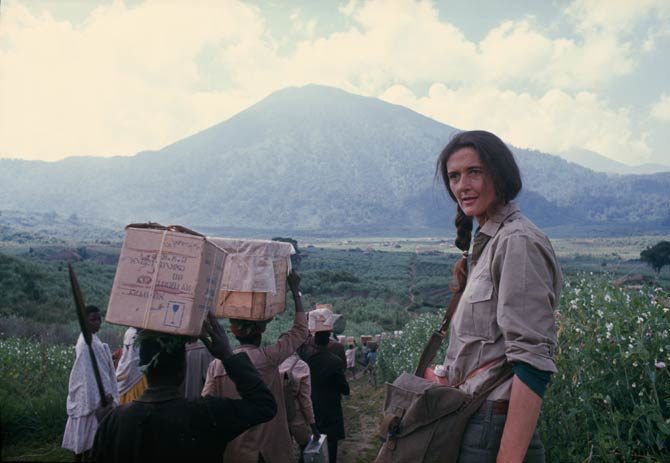
Life among gorillas
The techniques used by Dian Fossey to imitate the behavior of the observed animals have never been used before and have brought remarkable results. To document her achievements, the Nationat Geographic Society sent her to help filmmaker Bob Campbell, who had lived in Karisoke for three years filming gorillas. Thanks to these recordings and numerous photos, Fossey and her protégés became famous, and the world became interested in gorillas. It was Campbell who took the most famous photo of Dian Fossey when the gorilla first touched her.
Fossey has detailed the life of gorillas, more than once comparing their behavior and family life to that of humans. Her descriptions, seemingly unbelievable, were confirmed by films and testimonies of other researchers. Other naturalists, including apprentices, came to Karinoke. It should be noted at this point that they found life in the camp fascinating, but also extremely difficult due to the nature of Fossey. Even her co-workers claimed that she had problems with dealing with people because she was quick-tempered, cold-hearted, aggressive and completely distrustful of others.
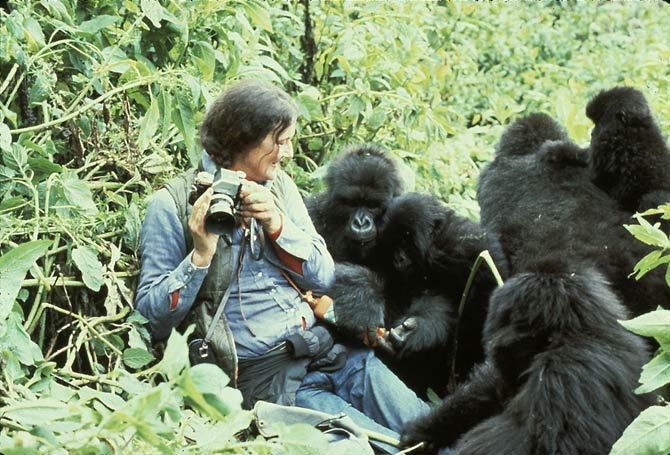
Digit
The male gorilla, whom Fossey called “Digit”, deserves a separate mention. It was a favorite animal observed by Fossey, distinctive for the fused fingers of one hand. Fossey had been watching him since he was still very young and had seen him gradually turn into an adult male. Digit himself was very fond of the researcher’s proximity – he even let her rest her head on his lap.
Unfortunately, on New Year’s Eve, 1977, Fossey received word that Digit’s body had been found. A group of a dozen poachers with dogs followed his family, so in order to allow other gorillas to escape, Digit attacked the poachers. He died from blows with machetes. When Fossey arrived at the scene of the fight, she saw a brutally mutilated body, devoid of head and hands, which poachers had sold as ashtrays. Fossey’s friends said that no tragic event in her life had shaken her so strongly.

Fighting poachers
Fossey repeatedly wrote to the president of Rwanda demanding harsh punishments for poachers – many years in prison and even death. She founded the Digit Fund, the task of which was to raise funds for the fight against poachers, and at her own expense trained and equipped the guards. Often, using the superstitious fear of the natives, she pretended to perform magical rituals, which made poachers panicky afraid of her.
Unfortunately, decisive actions combined with a difficult character prevented Fossey from winning allies, especially in the Rwandan government. Members of the government have repeatedly attempted to remove her from the country, describing her aggressive acts and threats with weapons – not to mention, of course, that she behaved in this way towards poachers.
Hard work and stress made the researcher ill – she had to return to the States to treat herself from sciatic nerve inflammation and emphysema. She then completed the diary ” Gorillas in the Mist”, which was published in 1983. In the same year she returned to Africa.
She continued her research as well as her ruthless struggle. Repeatedly she deterred both poachers and “ordinary” hunters by threatening them with weapons. The researcher, unfortunately, had many enemies, including the Rwandan authorities accusing her of disrupting the tourist traffic in the park.
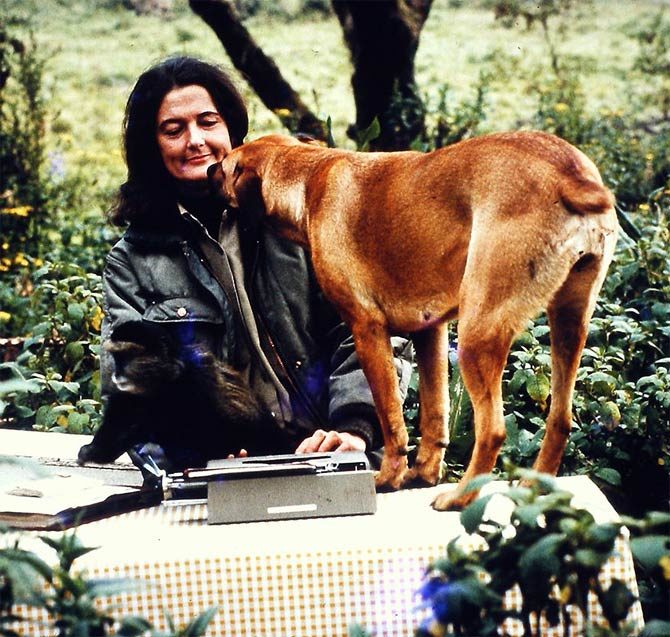
The death of Dian Fossey
Who killed Dian Fossey?
Finally, fate turned its back on her – on 27 December 1985, Dian Fossey was found dead in her room in the camp. The room was demolished to create the appearance of a robbery. However, the target was Fossey herself, murdered with a machete blow.
The murderer was never caught, but it is suspected that he could have been hired by one of the government officials, Protais Zigiranyirazo – later known for his organization of infamous “death squads” responsible for the deaths of hundreds of thousands of people.
“The man who kills the animals today is the man who kills the people who get in his way tomorrow” Dian Fossey used to say. Unfortunately, she was right, she paid for it with her life.

Heritage
Dian Fossey was the first person to so thoroughly study mountain gorillas in their natural habitat. It was thanks to her articles that many people learned about these animals at all. She also managed to draw attention to the problem of poaching and the need for remedial action. Volcanoes National Park has been significantly enlarged, giving the gorillas – at least in theory – more space to live. Dian Fossey was buried in Karisoke, in a makeshift cemetery where she buried the gorillas she had found murdered.
Foundation
The Digit Found is now called the Dian Fossey Gorilla Fund. Its task is to finance the fight against poaching, as well as educate pupils and students. Thanks to this, the Rwandans themselves finally understood how valuable – from every point of view – animals live in their country. They stopped seeing them as a target for hunters – but they became an important tourist attraction. Organized tourism to some extent disturbs the peace of animals, but allows people to get to know the environment of the creatures to which the researcher devoted her life.
The activities of the foundation and the awareness of how valuable and unique mountain gorillas are, have brought results. When Dian Fossey arrived in Africa, there were only 250 mountain gorillas in the wild. In 2008, there were already 680 of them, in mid-2018 their number was estimated at 880-1000 individuals.
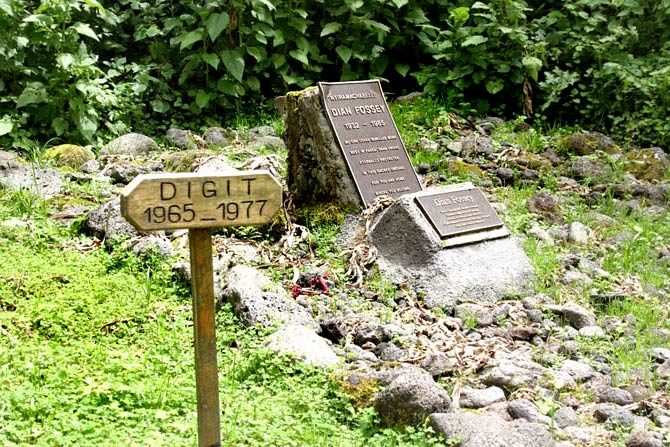
Dian Fossey – interesting facts
- 480 mountain gorillas live in the Virunga National Park. In the entire Virunga massif, the number of mountain gorillas increased from 480 in 2010 to 604 in 2016 thanks to protective measures.
- Apart from Virunga, the second area where mountain gorillas live in the wild is the Bwindi Impenetrable National Park (Bwindi Impenetrable Forest) in Uganda. 400 mountain gorillas live there. In both these areas combined, the number of mountain gorillas has exceeded 1,000.
